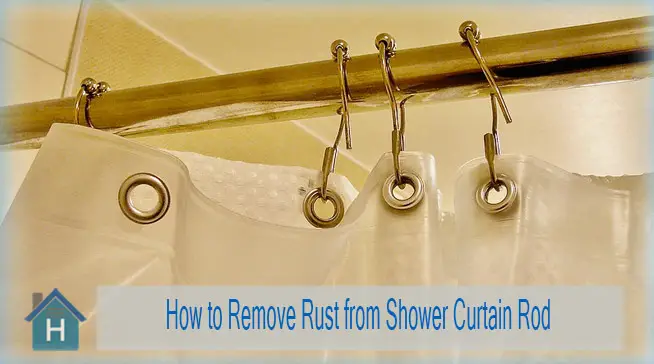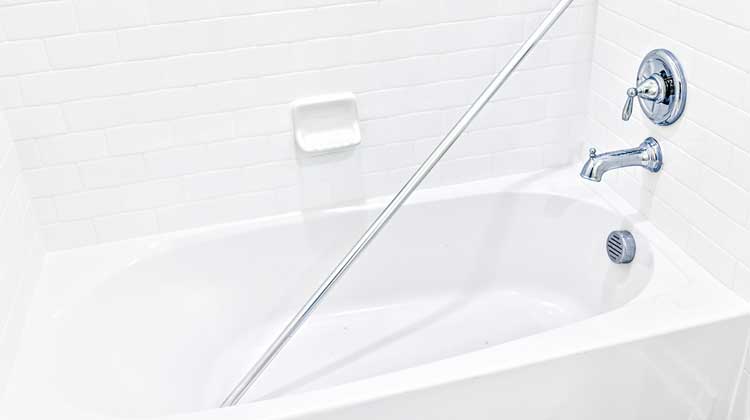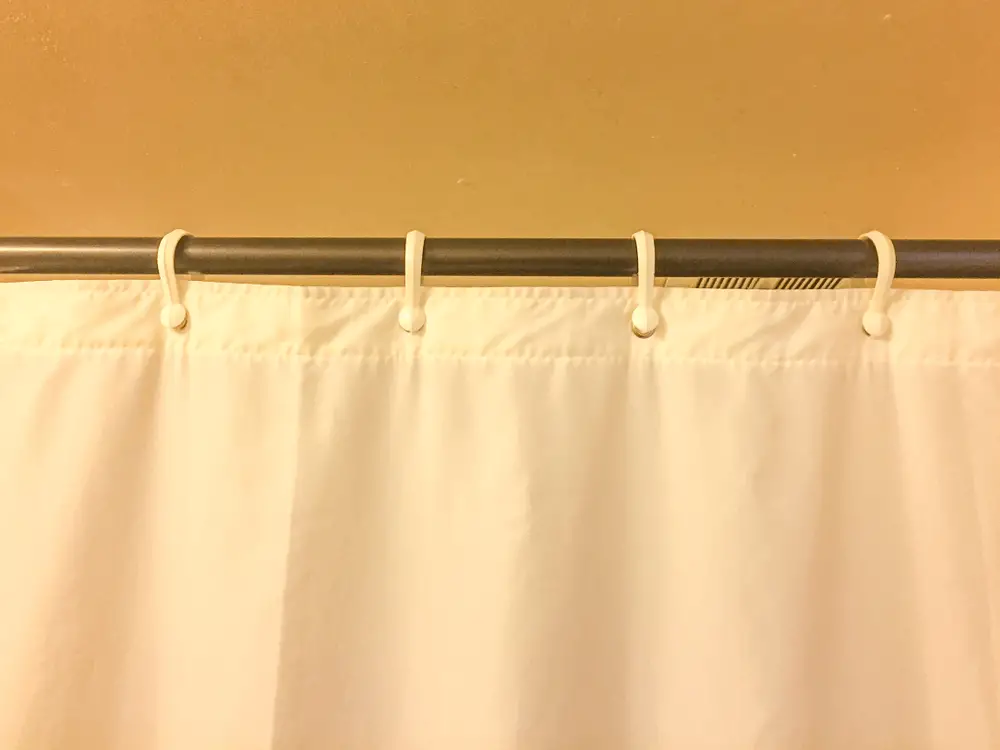Ugh, rust!!! The annoying stuff that’s just never ready to say goodbye for good, is it? What can you do anyway? It’s in the metal rod’s nature.
It may take February for love to be in the air, but humidity is there 24/7 every month. Thanks to our clingy pal humidity, it doesn’t take more than a second for oxygen to come in touch with rod’s metal and cook that crispy, cracking rust.
And why are we even blaming humidity only? A shower curtain is obviously going to get wet every time water is being used there. So many culprits are present in one definite spot!
Now, the culprits did what they were supposed to do, it’s our job to fix the mess; both literally and figuratively. So, grab your things to rescue that shiny metal surface underneath.

Tricks to Remove Rust From Shower Curtain Rod
So that you know, you can proceed in two different ways to fix the rod, and for so, you’ll need to go with two separate sets of elements. For convenience, we’re mentioning those elements all together at one row.
Things You’ll Need
- Heavy grit sandpaper: We all know that when you’re dealing with rust, you’re dealing with a stubborn mess. And what can be a better white knight than sandpaper to fight such monstrosity?
- Aluminum foil: You can literally consider it your scientific Messiah. How? We’re arriving there, wait for it.
- Metal wool: A metal substitute for sandpaper, made of steel.
- Vinegar: Not a mandatory element, but you can use it while applying the aluminum foil method. Or water.
- Rust stripping chemical: Only when the sandpaper or wool isn’t enough.
- Paint: In case you don’t want to repeat this rust cleaning method again in six months. Or go with water-resistant wax coating.
- Gloves and glasses: Yeah, rust is not human-friendly stuff if you think about it.
Now, with these elements, you can go by two routes to get rid of the annoying rust. You can either put all your energy out on grinding or let the science do that for you. The choice is up to you.
Fight It Practically
Yes, we’re talking about the method where the solution to this problem is completely relying on your energy and sandpaper/metal wool. It’s practical, it’s easy.
Get ready
Secure it tightly on both sides first, so that it doesn’t rotate while you’re working. Grinding will come with its own motion, so better not mess it with the rod’s movement.
It won’t be a wise thing to hold the rod and grind it with bare hands. Moreover, you’ll be applying chemicals too if needed. So, gloves are mandatory for the work.
And glasses too. Rusty debris flies into eyes all the time.
Once you and your rod are all prepared for it, head for the main business.
Grind it with all your stamina
Take the sandpaper or metal wool, wrap it around the rod’s cylindrical surface. Now start grinding in a powerful twisting motion. The constant grinding will help the rusty proportion come off gradually. But you got to put all your energy into this, no alternatives for that.
Don’t give up
What can we tell you, rust is one stubborn element. It’s hard to remove a layer of rust if it’s not slender enough.
So, there’s a good chance that one or two rubs won’t be enough in most cases. However, you shouldn’t get tired of all the contorting and twisting. In the end, the layer will certainly be gone, just be patient.
Chemical for the most stubborn layer
If you feel like the outcome the wool or sandpaper gave is not what you expected, you can always go for the slippery way.
You know when your hand gets stuck inside a jar and you can’t get it out, so you put some oil to make your wrist all slippery to make the process smooth? You’re going to apply the same technique here.
Just it’s going to be rust instead of a wrist and stripping chemical instead of oil. Yup, you got that right!
Apply some stripping chemical on the rust and let it rest for a while. After that, repeat the grinding process mentioned above.
However, you won’t have to put extra effort like before. The chemical will soften the layer, too soft for rubbing sandpaper vigorously.
There, the rust is removed for good.

Deal with It Like a Chemist
Yeah, like a chemist. You don’t need an actual degree in chemistry.
See, the equation is pretty simple. Air has oxygen, water has oxygen; the rod is made of iron. So, the reaction is bound to happen when they come in contact with each other, which results in the rust layer over your shiny shower curtain rod.
So, fight that bond of oxygen and iron, separate them for good. And use Aluminum foil as a cutter to divide them. That’s right, oxygen ion is more attracted to aluminum ion.
Soak the foil in vinegar
Every minute is important. So why not make the process faster with some boosting material? Vinegar will do that for you when you’re soaking the foil sheet in it.
Give a gentle rub
Clean the rod surface thoroughly with a piece of cloth. Now take the foil sheet and start rubbing it over the rod as you deal with regular cleaning. Since vinegar softens the rust layer, grinding won’t be necessary.
Soon after that, you’ll see the layer of rust slowly disappearing. All you’ll have to do after that is to give it a final wipe to get rid of the rust for good.
And your job here is done.
You may also read: how to install shower curtain rods | how to wash thermal curtains.

Rustproof Coating
You obviously don’t want to repeat these processes any time soon in the future, will you?
In this case, painting the rod will definitely do you a splendid favor.
Several options are available for that. You can use spray cans, bucket paint; whatever feels the best for you. However, we’ll recommend you go with spray paint because spraying makes it easier to coat the surface.
Use smooth wax coating if you don’t want to change the rod’s outlook with color.
Final Words
In conclusion, removing rust from a shower curtain rod may seem like a daunting task, but it is actually a fairly simple process that can be done with household items. By using vinegar, baking soda, lemon juice, or a commercial rust remover, you can effectively remove the rust and restore your shower curtain rod to its former glory.
This is Autem Decker. Main Author of ‘TheHomeDigs‘. You may not find her on the list of top 10 contemporary Canadian interior designers, but everyone who knows her says she was born to be an interior designer.
She makes her plan in her head and draws them in her years-old diary with a note in the corner. The way she plays with color and shape amazes us.
Connect Her On – Twitter